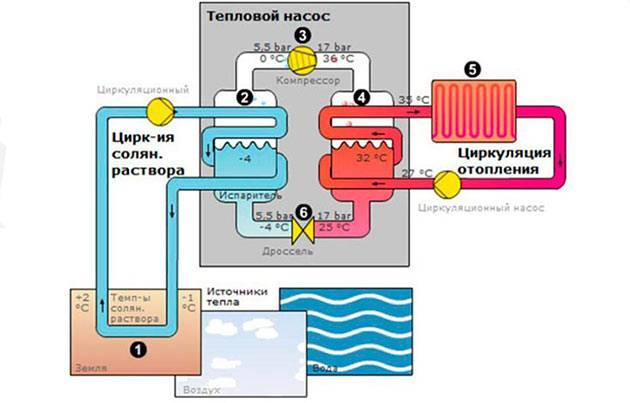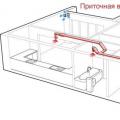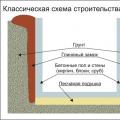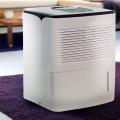A similar term refers to alternative types of heating for private houses, the principle of which is based on the use of renewable energy, for which there is no one to pay.
This also includes types of heating, the implementation of which in this way manages to generate at least some part of the heat.
Do-it-yourself alternative heating of a private house is often performed using infrared heaters. More and more of their designs are being offered in retail chains. The products are very simple and easy to use, offered at very reasonable prices.
The basis of such heating devices is an infrared film. The most common options are underfloor heating and warm baseboards.
Alternative heating sources can be used and connected as:
- additions to a central heat source (for example, a gas boiler);
- the main source of heating for the whole house.
Owners of private households pay a lot of attention when considering alternative sources of heating for a private house. Moreover, they treat this category of devices more widely.
These include traditional biofuel boilers, infrared heating, wind turbines, solar panels, collectors and heat pumps.
Consider alternative heating methods in more detail.
The use of heat pumps (HP) for space heating
Such alternative sources of home heating as heat pumps are most often used today as an alternative source of space heating.
The reason for this is that this technology is the most developed.
The principle of operation of the product, in a nutshell, is characterized as "a refrigerator in reverse." This device takes heat from the environment (air, soil or water) and redirects it to alternative space heating. The operation of the TN is based on the physical principle of Carnot.

The refrigerant charged into the closed circuit of the device is fed to the evaporator, where it expands with a simultaneous decrease in pressure and an increase in volume. In parallel, the refrigerant partially evaporates, in connection with which the temperature of the latter drops.
Cooled, it begins to intensively accumulate energy, taking it away from the walls of the evaporator connected to the heat exchanger. In the latter, the coolant is intensively moving, informally referred to as "brine". During these manipulations, the thermal energy accumulated in the bowels of the earth enters the system.
Manufacturers and retail chains offer alternative sources of heating for a private house in the form of HP of four main groups, differing in the types of thermal energy that they attract for space heating:
- Geothermal pumps (both horizontal and vertical) provide heating by using the heat of groundwater. The so-called "water-water" scheme;
- Heat pumps operating at the expense of thermal energy obtained from open reservoirs of natural origin (sea, lake, river, etc.). The "water-water" scheme has been implemented;
- Accumulation for heating of the heat contained in the air is carried out according to the "air-water" scheme;
- If the pump extracts the energy of the soil, then the work goes according to the "soil-water" scheme.
Solar energy or solar systems for home heating
Solar energy, thanks to the development of new technologies, is moving from the category of exotic heating options into the category of “alternative heating of a private house with your own hands”, which is actually used as heating systems.
Today, it is most often used to heat a room according to one of two options:
- Solar energy is transformed directly into electricity. Then the accumulated electricity is used to operate the heating elements.
- Solar energy is used for direct heating of the coolant. The last EC, or LC, passes through the heating devices, heating the premises of the house through them.
The disadvantages of similar systems are cloudy days, and, inevitably replacing day, night. Therefore, solar collectors are used in parallel with a variety of electric heaters.
Do-it-yourself alternative heating in this version provides that the actual temperature of the coolant is controlled by built-in sensors and, if its value drops below the fixed minimum allowed at night or in cloudy weather, the electric heater automatically turns on.
As a rule, any solar battery is equipped not only with an inverter and a controller, thanks to which U = 12/24 V (according to I const) is formed, but also with a capacious storage battery, which accumulates excess electricity generated during daylight hours.
Alternative sources of heating at home, made according to the indicated schemes, with the required area of photocells and the corresponding AB capacities, it is possible to implement a completely autonomous heating system.
Application of biofuel boilers
Independent installation of heating systems, consisting of a complex structure of pipes in the soil or solar collectors on the roof of a house, can be replaced by installing a special boiler that runs on environmentally friendly biofuels.
Heating a private house with electric or gas boilers is not always justified and cost-effective.
To kindle a bio-boiler, you can use:
- firewood;
- briquettes and pellets (for example, from sawdust or peat);
- biogas;
- wood pellets and chips, etc.
Briquettes are considered the best fuel for such a boiler, as they burn for a long time and retain heat.
Use of wind energy
In retail chains today you can find quite efficient models of devices that produce thermal energy through the use of wind energy (wind generators), which represent alternative types of heating.
They have quite decent performance and a balanced ratio of the efficiency of the device and its cost.
Such alternative heating systems for a private house have a significant drawback, they are large. For example, a wind turbine designed to generate 4 kW of electricity has very large wings (up to 10 meters). Alternative types of heating using wind fully possess all the disadvantages that currently available solar systems “sick”.




